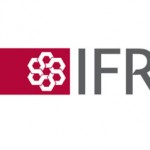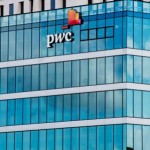Technology In Accounting: Banks Should Mind the Gap

Financial institutions often turn to technology to meet increases in regulatory and reporting demands, dedicating large and ever-increasing portions of their budgets each year to investments in tools and solutions that promise to help meet new regulatory requirements and accounting standards. Despite this reliance on technology, its value potential, and the advantages it brings, there is an expanding gap in the financial industry between the way in which technology is leveraged and the way in which technology could be applied to meet these demands.
The gap today is not due to the limitations of technology; on the contrary, properly designed technology has limitless potential to address virtually any challenge. It is this lack of limits that has contributed to an increase in demand. Regulators, standard-setters, and auditors have increased their expectations in lockstep with advances in technology. However, some financial institutions have not harnessed the available technology effectively – thus the technology gap.
As accounting standards and regulations continue to increase in complexity, modern technological solutions will become increasingly vital not just to satisfy new challenges, but to enable financial institutions to thrive in spite of them.
Why Is There a Technology Gap?
In the 1970s, technology was in its infancy, and servicing systems were accounting systems. Regulators and standard-setters had to restrain their expectations to the limitations of technology.
For example, the first time that the effective yield is mentioned in the accounting literature is during the 1970s, when FAS 15 was issued. However, it only applied to a very small subset of loans. Realistically, FAS 15 could only be applied to a small subset of loans because spreadsheets hadn’t been invented yet. How would an institution calculate the effective yield in the 1970s without a spreadsheet, you ask? FAS 15 required a special group to code a special program on a mainframe.
However, by the mid-1980s, technology had advanced to the point that standard-setters could require an institution to calculate the effective yield on virtually all loans. FAS 91, issued in 1986, was the beginning of the divergence of accounting for loans based on actual cash activity relative to accounting for loans based on the scheduled contractual cash flows.
Although the Financial Accounting Standards Board delayed the effective date of FAS 91 for a year in order to allow banks to make the necessary improvements to their accounting systems (read: servicing systems), many systems never made the necessary changes, and some still don’t meet the letter of the standard. With the issuance of FAS 91, the technology gap was initiated, and in somewhat of a domino effect, regulatory and reporting requirements have continued to increase along with advances in technology.
The Current Gap between the Cash and Accounting Views
Traditionally, accounting views look at present-day conditions and historical events. Servicing systems were designed to maintain the “cash” view of a loan, which also looks at present-day conditions and historical events. Servicing systems are quite good at knowing what has happened vis-à-vis the borrower. When the accounting view was synchronized with the cash view, the servicing systems were de facto accounting systems.
Today, the trend is to look forward. Heightened regulations and changes in portfolios, stemming directly or indirectly from the 2008 financial crisis, spurred changes in accounting and finance to incorporate forecasting as a standard practice, such as the Comprehensive Capital Analysis and Review (CCAR) and Dodd-Frank Act Stress Tests (DFAST).
The new regulatory demands are set in the context of today’s extremely powerful technology and its virtually limitless possibilities. No longer are the expectations of regulators confined to the limits of technology; this marks a fundamental shift from the regulatory environment of the 1970s and 1980s, and legacy solutions struggle to meet new demands for which they were simply not designed. Simply stated, servicing systems, which sufficed for years, are no longer adequate to account for loans.
In a scramble to remain current and compliant, banks have turned to cumbersome spreadsheets and cocktails of new and old accounting tools. Larger institutions have devoted millions of dollars to in-house-designed IT solutions. Not only are these solutions a bandage fix, they present more risk and expense in the long run. Take for example the possibility of human error in cases where manual overrides are necessary to keep records current. Emailing spreadsheets back and forth between teams leaves banks vulnerable to the very issues these makeshift tools were meant to prevent.
Stress testing, if you’ll pardon the pun, has stressed institutions. Generating the accounting view of forecasts of loan behavior conditional on macroeconomic scenarios in a controlled production process has vexed nearly all institutions that have attempted it. Traditional modeling alone – which usually sits in a separate, nonproduction silo – is not enough to meet minimum needs for many organizations. Models must be “productionalized” to be effective.
Future Gaps
As technology improves, the expectation of that technology grows. Regulators and standard-setters are no longer constrained by the limitations of technology. Today, there are more operational challenges with loans than in the past, and the challenges are less straightforward. Stress testing (DFAST and CCAR), the proposed new accounting standard for reserving (current expected credit loss, or CECL), and other changes will continue to create complexity for institutions of all sizes. Tighter integration between finance and risk is a business necessity.
In addition to the challenge of productionalizing models, the impending CECL standard will challenge banks to analyze data in a more meaningful way. CECL will require financial institutions to forecast life of instrument credit losses and attribute changes in the forecast to macroeconomic assumptions and loan attributes. In order to successfully perform an analysis of the change in expectations, accountants will need software that does more than just merge data. Without this capability, it will be impossible to remain current and compliant – there will be greater pressure not just to generate results in a timely manner, but to also explain why results changed.
The bottom line remains that technology is a double-edged sword. It enables, but at the same time it leads to increased expectations. Currently, there is a large gap between what is technologically possible and the tools, systems, and processes typically employed by banks. In order to close the technology gap in the financial industry, banks must embrace the technology of the 21st century.
Today’s integrated risk and finance platforms cross traditional silos like accounting and credit with domain-specific data models and well-architected integrated components that can fundamentally change the way an institution performs key functions. Doing this will allow banks to do more, do it faster, and do it more cheaply, upending the typical view that new IT spend is a cost.
Source: accountingweb – Technology In Accounting: Banks Should Mind the Gap





























